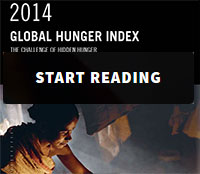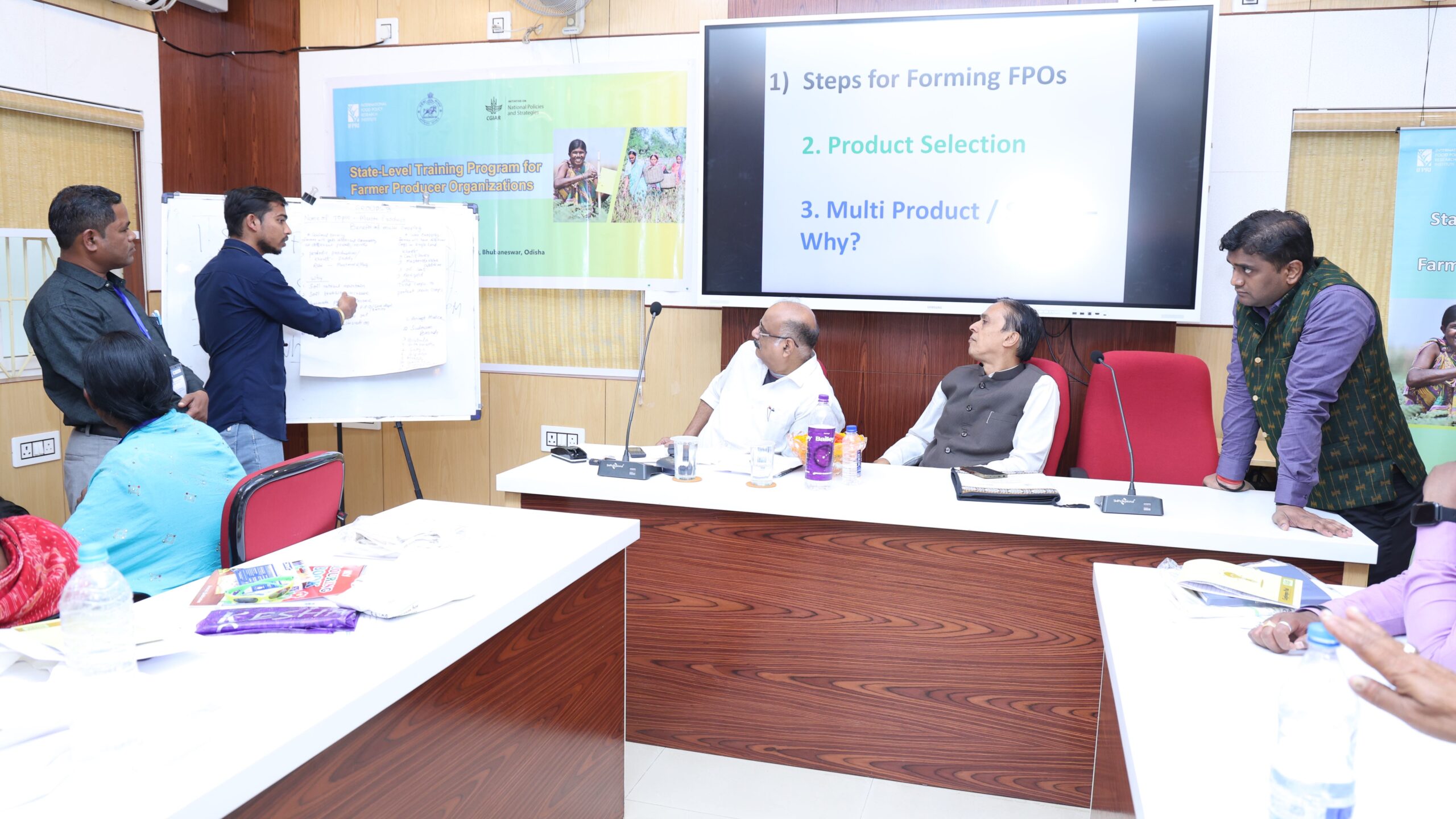Hunger remains a persistent global challenge as the 2015 deadline for the achievement of the United Nations Millennium Development Goals (MDGs) draws near. According to the Food and Agriculture Organization of the United Nations (FAO), despite significant inroads made in the fight against hunger and malnutrition since 1990, 805 million people are still going hungry.
Earlier today, IFPRI and partners Concern Worldwide and Welthungerhilfe launched the2014 Global Hunger Index (GHI). Detailing hunger at national, regional, and global levels, the GHI provides a comprehensive view of global hunger on an annual basis. Now in its ninth year, the report presents scores calculated for 120 countries, based on three equally-weighted indicators: undernourishment, child underweight, and child mortality. These scores are measured along a 100-point scale; a score of zero represents no hunger and 100 signifies that the entire population was undernourished.
Hunger levels are improving from what they were in 1990. The GHI score for the developing world, or “aggregate GHI” in 1990, was 20.6; 2014’s aggregate score is 12.5, indicating a 39 percent reduction in hunger. However, despite this progress, “the 2014 aggregate GHI remains ‘serious’ and warrants continued concern,” explained the authors of the report.
A comparison of the 1990 scores to those of 2014 also highlights notable improvements in reducing hunger at the regional level. The 2014 GHI score is 28 percent lower in Africa south of the Sahara, 41 percent lower in South Asia, and 40 percent lower in the Near East and North Africa. Latin America and the Caribbean and East and Southeast Asia fared even better, with a 53 percent drop and a 54 percent drop, respectively.
The highest 2014 GHI regional score belongs to Africa south of the Sahara, closely followed by South Asia, an indication that these two regions continue to struggle with hunger.
From the 1990 GHI to the 2014 GHI, 26 countries reduced their score by 50 percent or more; 39 countries exhibited scores that dropped by 25 to 49.9 percent; and 17 countries reduced their scores by less than 25 percent.
As the international community looks toward the rapidly approaching MDG deadline and prioritizes programming and interventions in 2015 and beyond, the 2014 GHI offers several policy recommendations:
- Prioritize food quality to eliminate hidden hunger, or micronutrient deficiency, through better targeting and indicators, as well as action plans that reflect this commitment;
- Develop integrated and complementary policies that are inclusive of appropriate stakeholders;
- Improve nutrition through investment in capacity building; and
- Improve accountability of stakeholders through more expansive monitoring and research.







